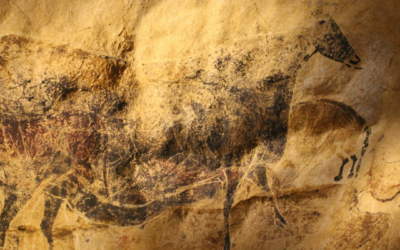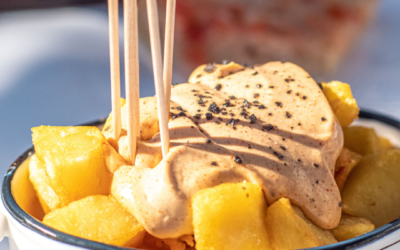Holy Week is a deeply rooted festival in Catalonia, a time when devotion and heritage blend with unique cultural events. From major cities such as Barcelona, Girona, Tarragona and Reus, to the charming corners of Costa Brava and Costa Dorada, each locality lives these days with its own character, offering a wide range of celebrations, from solemn religious processions to beloved popular customs.
In this article, we will explore some of the most emblematic traditions of Catalan Holy Week, such as the Armats (Armats), the sardana dances and the Mona de Pascua (Easter cake), discovering their history and significance.
From liturgical events to more festive celebrations, we invite you to discover how these days are experienced in different parts of Catalonia. You can travel to Barcelona, Costa Dorada and Costa Brava with Shuttle2Sun‘s low-cost and sustainable shared transfer services and private transfer services from Barcelona Airport, Barcelona Port, Reus Airport, Girona Airport and Camp de Tarragona AVE train station.
When is Holy Week?
Holy Week is a Christian celebration with a variable date that commemorates the Passion, Death and Resurrection of Jesus Christ. Its calendar is based on the lunar cycle, as Easter Sunday is set as the first Sunday after the first full moon following the spring equinox in the Northern Hemisphere. For this reason, the dates vary each year, falling between March 22nd and April 25th.
In 2025, Holy Week will begin on Palm Sunday, April 13th, the day that commemorates the triumphal entry of Jesus into Jerusalem. During the week there will be numerous liturgical events and processions, with key moments such as Maundy Thursday, on April 17th, which commemorates the Last Supper; Good Friday, on April 18th, which focuses on the Passion and Death of Christ; and Easter Sunday, on April 20th.
Easter Monday, April 21st, is also a public holiday in Catalonia, a day on which the tradition of getting together as a family to share the Mona de Pascua, a typical sweet that marks the end of the celebration, is maintained.
Palm Sunday: blessing of the palms and branches
Palm Sunday marks the beginning of Holy Week and is celebrated with a deeply rooted tradition in Catalonia: the blessing of the palms and branches. This act symbolises Jesus’ triumphal entry into Jerusalem, when the crowds received him with palm branches.

In Catalonia, thousands of the faithful flock to churches in towns such as Barcelona, Tarragona, Reus and Girona to bless these branches, which are later taken home as a symbol of faith and protection.
Travel to Barcelona, Costa Brava and Costa Dorada with Shuttle2Sun‘s low-cost and sustainable shared transfer services and private transfer services from Barcelona Airport, Barcelona Port, Reus Airport, Girona Airport and Camp de Tarragona AVE train station.
The Armats: the most imposing tradition of Holy Week
One of the most striking images of Holy Week in Catalonia is that of the Armats, Roman soldiers who parade with martial discipline through the streets of several towns, especially in Tarragona. With their Roman-inspired costumes, impeccable formation and the sound of drums marking the pace, these groups have become an essential symbol of the festival.
In Tarragona, they play a key role in the emblematic Procession of the Holy Burial, which is held on Good Friday and is considered one of the most important in the Mediterranean. Before the procession begins, the Armats go around the city, gathering the procession elements one by one from the churches, in a solemn act steeped in tradition.

When the procession finally moves on, more than 4,000 people take part in the parade, divided into 13 guilds, brotherhoods and congregations, accompanying 20 processional “pasos” (floats) that represent the key moments of the Passion. This tradition, with centuries of history, was recognised in 2010 as a Cultural Heritage Asset of National Interest by Generalitat de Catalunya, consolidating its importance within the Catalan cultural legacy.
Easter Monday and the Mona: the most eagerly awaited confectionery
In Catalonia, Holy Week culminates with the celebration of Easter Monday, a festive day marked by the beloved Mona de Pascua tradition. This centuries-old custom has great family significance, as it is the godparents who give the mona to their godchildren, a gesture that symbolises joy and renewal after Lent.
Unlike in other regions, where the mona is usually a simple sponge cake, in Catalonia it has evolved into a true work of pastry art. Nowadays, patisseries create spectacular chocolate monas, with increasingly elaborate designs that can represent anything from cartoon characters to emblematic monuments or sports figures. You can also find “monas” made of layered sponge cake, filled with cream, chocolate, cream or butter; decorated with chocolate eggs, chicks and coloured feathers.
Beyond the visual aspect, Mona Day is the perfect excuse to enjoy a day out with family or friends, traditionally with a picnic in the open air, in the towns of Costa Brava and Costa Dorada, or in natural surroundings.
Sardana dancing
Finally, during Holy Week in Catalonia, in addition to the processions and religious events, there is also space for culture and popular tradition. One of the most representative events is the sardana dance, an emblematic dance of Catalan identity that becomes a symbol of union and celebration during these dates.
In several towns, such as Barcelona, the squares fill with people forming circles to the rhythm of the “cobla”, the band of musicians who accompany the dance with traditional instruments. For example, on Sunday, 13th of April, the Aplec de la Sardana de Sants will be held, and on 19th and 20th of April there will also be a sardana dance in front of Barcelona Cathedral.
Experience Holy Week in Barcelona, Costa Brava and Costa Dorada, reaching your destination with Shuttle2Sun‘s low-cost and sustainable shared transfer services and private transfer services from Barcelona Airport, Barcelona Port, Reus Airport, Girona Airport and Camp de Tarragona AVE train station.



